
Date Jesus Began His Ministry Revealed
Scripture tells us very little concerning the start of Jesus’ ministry. And, because scholars have for various reasons continued to rely to a wrong date concerning the death of Herod, this has in turn caused them to conclude inaccurate dates from the birth of Jesus to the start of His ministry to the date of His crucifixion. In order to accurately answer to this question, we need to cross reference vague scriptural clues with modern astronomical dating facts.
The start and length of Jesus’ ministry hangs on three events. First is the date of His birth. The second is the date of His first miracle in Cana and the third is the date of His death. We now know for certain that Jesus was born on June 17th 2 B.C. And although some scholars in the past have guesstimated this date correctly, we now know this date is certain. Modern astronomy software clearly shows that it was on this date that the Star of Bethlehem was in fact Jupiter and Venus stacking within two degrees of separation. This created the brightest celestial object ever seen in recorded history. Please read related: “THE ACTUAL STAR OF BETHLEHEM REVEALED”
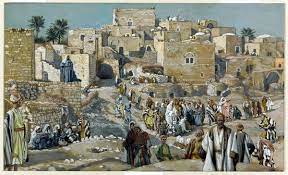
The Gospel of Luke states that, “Jesus was about 30 years old when He began His public ministry” (Luke 3:23). The physician and biographer Luke must have interviewed Mary in order to have learned the various details he wrote about concerning the birth of Jesus. Therefore, it is highly probable Luke also learned from Mary the age of Jesus when He left His home in Nazareth to start His ministry. While Jesus was from the tribe of Judah and not the tribe of Levite, this age of thirty coincides with the prescribed induction age into the Levitical priesthood (Numbers 4:3). The actual date of His first miracle is not given in Scripture, but it occurred soon after His baptism by John the Baptizer and just before the first Passover of His ministry.
We now need to understand that in the first century, most calendars throughout the ancient world were based on the phases of the moon. The Romans had a 365 day calendar, but they were pagans. Therefore, the Jews continued to keep time based on their religious calendar which had 30 days to each month, a full moon on the 15th and 360 days per year. Today we know know that there are 365 ¼ days per year, thus all calendars were always having to be adjusted so that the seasons and celebrations occurred at the right times. Please read related: “How the Modern Calendar Was Invented”. We know that Passover must always be held during the Spring full moon, and a full moon in the first century always occurred on the 15th of the month. We also know that the majority of Jewish weddings were and are typically held in the Spring of the year. Therefore, we can rightfully assume the wedding at Cana that Jesus attended and performed His first miracle must have occurred sometime between late March or early April only a number of days before the 15th. Jesus needed time to attend the wedding, then spend time with His family back in Capernaum, and still be in Jerusalem several days before the Feast of Passover began.
The date of Jesus’ death is also now known by cross referencing Scriptural clues with modern calendar dates and astronomical events as cited by Jewish historian Josephus. These astronomical events are both calculated and displayed with incredible accuracy as the mathematics involved are calculated by using modern computer software. This is the exact same software NASA uses to determine where objects in space will be at a future date in order for spacecraft to make accurate rendezvous.
Scripture states Jesus died on a Friday which is referred to in Scripture as a “preparation day” because it was the day before Passover began. The Gospel of John states that this particular Passover {full moon} fell on a Saturday or Sabbath which is the Jewish day of rest. Because Passover fell on a Saturday, it was referred to by the Jews as a “High Sabbath” (John 19:31-42). A High Sabbath is somewhat rare so it makes locating this date much easier and accurate. Until the advent of the modern calendar, Passover always fell in the middle of the month of Nisan or April during a full moon. Then as now, the actual day of Passover is similar to a birth date. A person may have been born on a Wednesday but their birthday only occasionally falls on a Wednesday. So it was with the Passover of 33 A.D. It fell as always on a full moon, but this time on the Sabbath or Saturday. This, in turn, turned out to be a direct warning for the people of Israel as will be revealed later in this Paper.
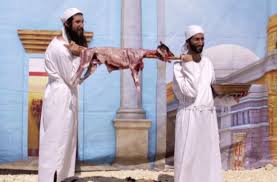
Preparation day was the day before Passover when the Passover lamb is inspected by a Temple priest then sacrificed with the meat processed in the Temple's courtyard area. Parts of the animal’s fat were burned as a sacrifice, and parts were donated to the Levitical priesthood. The rest was taken home by the parishioner to be dressed, roasted and eaten that evening at sundown when Passover begins. Since John told us that this particular Passover occurred on a Saturday, we now know that the preparation day was a Friday. We also know that Passover always starts at 6:00 P.M. with the rising of a full moon.
So, all we need to do now is simply program our astronomical software to display all the full moons that occurred in the 1st century, in the month of Nisan or April that arose on a Friday evening with the start of a Passover that ran through the next day or Saturday. When we do this, we clearly see, with no possibility of error, that there was a full moon that arose over the country of Judah on Friday evening April 3rd 33 A.D. And remarkably, it was not simply a full moon, it was a full Blood Moon!

This time of day and date issue is a little confusing as the Jews consider the start of a day to begin at 6:00 P.M. This is because in the creation story of Genesis it states, “… and the evening and the morning were the first day” (Genesis 1:5). Therefore, Jesus was crucified in the morning of Friday April 3rd, 33 A.D. on the Passover Preparation Day as stated in Scripture. He died six hours later at approximately 3:00 P.M. Friday afternoon and was put in His tomb around 4:00 P.M. (Matthew 27:45-50). Approximately two hours later, or by 6:00 P.M., Friday ended and Saturday began as did the start of Passover which would now last until Saturday evening at sundown.
Now that we know for certain when Jesus was born and when He died, we need to discover when did He start His ministry that ended with His death, burial, resurrection and ascension. To accomplish this, we need to delineate between the Passovers Jesus attended before His Ministry as opposed to during His ministry.
Jesus’ parents were from the village of Nazareth. They were what we would call today Orthodox Jews or right-wing conservative in their religious practices. They followed the Mosaic law both civil and religious to the letter. They observed all the festival dates, customs and food restrictions. This means that Jesus grew up fully under the law and continued to practice the law, not necessarily all the customs, until the day He died. He was the only man to ever accomplish this feat and thus the only man considered by God to be fit to atone for the sins of mankind as an unblemished Passover sacrifice. Jewish law stated that all able bodied men living a reasonable distance from Jerusalem were expected to attend at least three of the seven annual Jewish feasts (Exodus 23:17; Leviticus 23:1-44). The three feasts were Passover or the exodus from slavery in Egypt, Pentecost or the giving of the Law at Mount Sinai, and Booths or Tabernacles when God dwells with mankind.
Jesus and His family lived seventy miles or a four-day journey north west of Jerusalem. Therefore, Jesus made many trips to Jerusalem as a young boy accompanied by His stepfather Joseph and many of the men from Nazareth (Luke 2:21). While Luke tells us Joseph and Mary took Jesus to “every” Passover, the first time we read of Jesus actually participating in this feast was when He was twelve years old. At this time, the family went to Jerusalem to primarily celebrate Passover, but they may also have conducted a rite of passage in which a boy becomes a young man. Today this is referred to as a Bar mitzvah, however, this modern ceremony did not exist in the time of Jesus. You see, the father of a child was held solely responsible for the child’s actions until an age when the child could start to be held accountable for his or her actions. This initial age seems to have been 13 for boys and 12 for girls. This makes sense in that Jesus was twelve in April at Passover but would turn thirteen two months later in June. Therefore, His stepfather Joseph would have been looking forward to this milestone in Jesus’ life. And, this would explain why His parents found Him in the Temple engaged in a scriptural discussion with the Temple priests (Luke 2:41-47). Excavated tombstones in Israel show that it was customary, in the first century, for a female to be engaged or married by the age of thirteen.
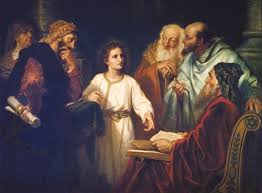
The legal Age of Full Accountability for Jewish men was nineteen (Exodus 30:14; Numbers 14:29). This was established as part of Mosaic Law during the Exodus. Jesus was quickly coming of age and His parents, along with all those listening to Him in the Temple, were “astonished” at His in-depth knowledge of Scripture and answers to their questions. He would have been considered a child prodigy but not necessarily the Messiah. While Jesus’ parents were from Nazareth, Jesus was born in Bethlehem due to a mandatory taxing and tribal census conducted by Rome and the Temple twelve years earlier. He was circumcised in the Temple eight days after His birth according to Jewish law. Six months later, on December 25th 2 B.C., the Magi arrived at the Home of Joseph in Bethlehem to present their presents (Matthew 2:11). That night, Joseph received a revelation from God that Herod was plotting to kill Jesus. Joseph and his family immediately fled Jerusalem for the safety of Egypt. Herod died one year later on December 29th 1 B.C. during an eclipse of the moon (Flavius Josephus, Antiquities of the Jews). This date was the one year anniversary of his killing the children of Bethlehem. In the early Spring of 1 A.D, Joseph moved from Egypt back to the remote village of Nazareth (Hosea 11:1). However, Jesus had no doubt made at least a dozen trips from Nazareth to Jerusalem with His parents by the time He was twelve years old (Luke2:21-39).
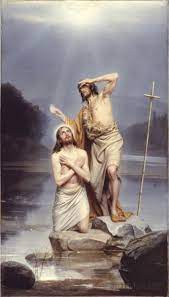
All four Gospels give an account of the baptism of Jesus by His blood relative John in the Jordan River. They were probably cousins, but Scripture is not clear on their exact blood relationship. It was during that event that the Triune Godhead appeared for one of only two times. The second time would be at Jesus’ Transfiguration. As Jesus came out of the water, having been ceremonially anointed as Messiah and High Priest in the Order of Melchizedek, He was also now fully indwelled by the Holy spirit. It was then that a voice was heard from Heaven saying, “This is My Son who I love; with Him I Am well pleased.” (Matthew 3:13-17) While this initial event marked the official beginning of Jesus’s ministry, there was a second part that quickly followed.
Scripture states that Jesus was immediately led by the Holy Spirit into the wilderness for forty days to fast, pray, locate and confront Satan (Matthew 4:1-11). The reason He was required to do this is because, even though He was pure in mind, body and spirit, He had not been tested for virtue. And to serve as the Messiah of the world, He would need to be tested by the very best.
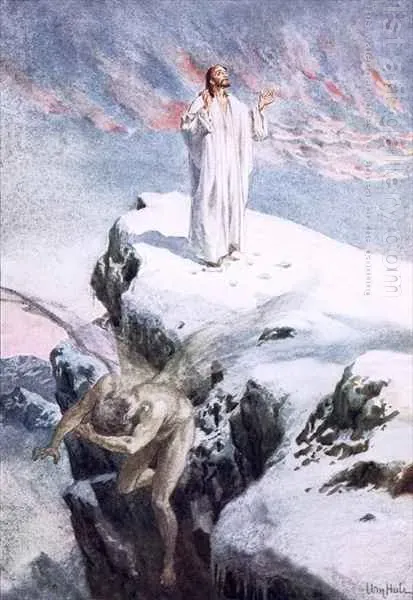
It was most probably on the fortieth day of His fast that Satan made his move to tempt Jesus with food, fame and power. Having been indwelled by the power of the Holy Spirit, Jesus had two paths He could freely choose to go down. He could remain a humble servant of God in His mission as Savior of mankind, or He could choose to use His abilities to become a god of this world obtaining great wealth, commanding great armies and controlling all the empires of the earth (Matthew 4:8-9). Adam, the first man was tested and freely chose to become his own god and do whatever he wanted with or without God’s consent. Now Jesus, genetically a Son of Man or Adam through His mother Mary, could freely make His own choice. While He refused the offers of Satan, the final World Leader will accept Satan’s offer, be indwelled by a powerful demon spirit, and become the Antichrist that leads the entire world to the brink of annihilation (Matthew 24:22; Revelation 12:7-12).
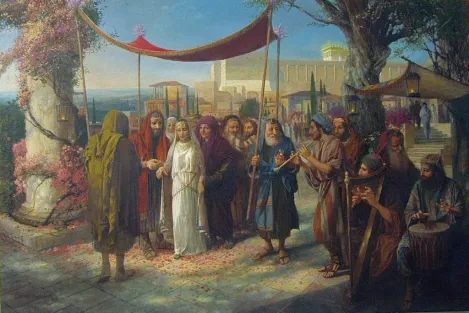
Scripture tells us that after Jesus left the wilderness, He immediately met back up with His first four disciples Andrew, Peter, Philip and Nathanael. Nathanael is sometimes know under his father's name Bar-Tholomew. This meeting probably occurred in Capernaum, the home of Peter and Andrew. They then traveled to the village of Cana to attend a wedding (John 1:35-46, John 2:1-2). Cana is located six miles north of Nazareth and is the home of Nathanael. The newlyweds may have been relatives of Jesus thus He and His disciples were all invited. It was at this event that He performed His first miracle. Jesus apparently had the power to produce miracles, but was not told by God to use this power before this time. This would explain why Jesus was questioning His mother as to why she would ask Him to deal with a problem during the wedding celebration that was rightfully an issue for the wedding’s host. Meaning, if God had wanted Jesus to become involved, He would have told Him. While Mary was given a prophecy by the angel Gabriel that Jesus would be the next King of Judah, she was probably not aware that He had the power to create miracles as He had not done so up to this point in time. And while there were fictitious novels written in the third and fourth centuries that told stories of Jesus performing miracles as a child, these writings are considered by all modern scholars as being non historical and unworthy to be included in the New Testament. So, these are not so called Lost Gospels as they are False Gospels. At the time of the wedding, Mary was a widow and so she turned to her first-born son Jesus to hopefully secure the funds needed to buy more wine. Her stated expectation was that Jesus would find and give money to the servants who would and then do what Jesus instructed them to do (John 2: 1-5). But apparently, the Holy Spirit moved Jesus to go ahead and perform a tremendous miracle by turning approximately 130 gallons of water into aged wine.
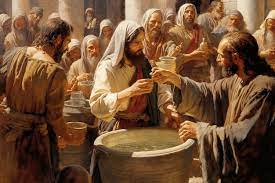
There are a number of plausible reasons Jesus created this unusual miracle. First, the wedding may have involved one of Jesus’ siblings or a relatives. Therefore, the shortage of wine was an embarrassment to the family and created a pall over the celebration. Second, there was possibly a rumor circulating concerning whether Joseph was the legitimate biological father of Jesus. This would be a charge brought up later against Jesus by the Pharisees (John 8:19). So, this public miracle would have cleared the air and restored the respect Mary deserved. Third, the water was symbolic of the Holy Spirit and the wine was symbolic of the blood of Jesus. Thus, His blood released the Holy Spirit to give the opportunity for all mankind to celebrate freedom from sin and eternal life. However, it could also very well be that this first miracle of Jesus harkens back to the Garden of Eden.
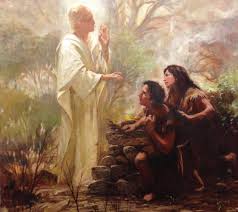
We read in the Book of Genesis that God caused Adam, the first man, to sleep {the first anesthesia} at which time He removed some flesh from Adam {first surgery} and He built Eve from the flesh of Adam {first cloning} (Genesis 2:21). He then brought Eve to Adam where {first Marriage ceremony} was conducted. Adam looked at Eve and knew he could not be whole again without her. He gave the {first wedding vow} that he considered Eve an equal and took her as his wife creating the {first Holy Covenant of Marriage} (Genesis 2:22-24). We later read that the Lord Himself would actually walk in the Garden and converse with the couple in the cool of the evenings (Genesis 3:8). This then would have been a pre incarnation of Christ also known as a Christophany. So, it seems completely appropriate that Jesus, as God incarnate, would be present and perform His first miracle for yet another wedding. He created the first couple, conducted the first wedding ceremony and now participates in this wedding event by assisting with the celebration.
Also, it is worth noting that the wedding probably took place on a Tuesday and here’s why. In the Book of Genesis, God did not bless the Second Day or Monday. This is because it was the day that God separated the waters that covered the earth to expose land. This day also saw the creation of the earth’s atmosphere. We know that Satan was allowed by God to have his kingdom located in the atmosphere of the earth (Ephesians 2:2; Luke 10:17-18). Therefore, the Second Day was not blessed by God. However, we read that the third day or Tuesday was blessed twice by God (Genesis 1:9). The Jews therefore preferred to be married on a Tuesday as they saw this as a way to receive a double blessing from God on their unions.
On an interesting note, God did not give the seven days names. Instead, He only numbered them. It was mankind that audaciously named the seven days after seven pagan gods. Also, the only planet God personally named was the planet Earth. All other planets received pagan names. Many scholars believe these names were some of the names of the Nephilim or Giants killed in the Flood of Noah.

After Jesus turned the water into wine, He told the servants to take a cup to the host to taste. Traditionally, the host tasted all food and drink before it was served to the guests. The host tasted the wine and exclaimed that it was superior to the original wine provided at the celebration. This means the wine was aged. And this in turn means that Jesus had the power to not only change matter on a molecular level, but He also had the power to control time by instantly ageing the wine (John 2:10). This helps explain how, at the Rapture, Christ will molecularly reconstruct and give eternal life to human bodies currently in their graves, while at the same time, translating the living to a state of immortality. Then all believers will experience a rejuvenation back to their thirties when they were at the peak of their physical and mental abilities.
The next information given by Scripture concerning the date of the start of Jesus’ ministry occurs after the wedding. Jesus now leaves Cana with His mother, siblings and disciples to travel back to the city of Capernaum (John 2:12). He will use this city and Peter’s home as His base of operations for the entirety of His ministry. We are told they stayed there only a few days, then Jesus escorted His family directly south as far as the city of Tiberius. There the road forks southwest to Nazareth, and directly south to Jerusalem. His family took the road back home and Jesus took the road to His destiny and the first Passover of His ministry (John 2:13).
The Gospel of John is the only Gospel that tells us Jesus attend three Passovers. However, all four Gospels tell us the details of His final meal held Thursday evening known as the Last Supper. And all four Gospels relate details concerning His public crucifixion the following morning. He would be certified as dead approximately three hours before Passover began Friday evening at sundown (Matthew 27:45).
So the wedding must have occurred in early April. This in turn means that His forty days in the wilderness must have occurred sometime between late February and early April. This means that His baptism must have taken place in the month of January or early February. Scripture tells us that the place Jesus was baptized was located at, “Bethany beyond the Jordan” (John 1:26-28).
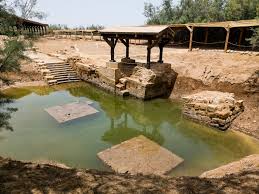
This site was excavated in 1996 and is twenty miles south east of Jerusalem on the Jordanian side of the Jordan River where it enters the Dead Sea (Robin Ngo, “Baptismal Site ‘Bethany Beyond the Jordan’ Added to UNESCO World Heritage List”, Biblical Archeology Society, May 10, 2021). I have personally been in Israel in January and the baptism site located on the Israeli side of the Jordan was crowded with pilgrims waiting to be baptized. We cannot know if Jesus was told by God to be baptized at the age of twenty nine just four or five months before He turned 30. Or, was He told to wait until after His 30th birthday in June, be baptized then preach from June until the following April when He attended the first Passover of His ministry.
Again, while Jesus was under the Mosaic law, He was not of the priestly tribe of Levi but instead the King tribe of Judah yet in the Order of Melchizedek as both King and High Priest. The ancient Jews understood this future stature of the Messiah as a King-Priest and even had a crown made for His arrival. God was also clear that the Levitical Priesthood was temporary and therefore did not give this institution which He created His Eternal Blessing. The crown for the coming King-Priest was briefly worn by Joshua and then put in storage. Unfortunately, it was lost in antiquity (Zechariah 6:11). Bottom line, Jesus would not necessarily need to wait until the age of thirty to start His ministry. So, there is no sure way to know for absolute certainty which one of these two possible ministry timelines of 3 years or 4 years He used.
At the conclusion of this Paper, I have outlined the two timelines to help the reader decide this issue on their own. One timeline will show that Jesus had a 37-month ministry which is most often taught. The second timeline shows a 49-month ministry. This timeline has become popular with those scholars that are convinced that Jesus could not have visited the number of cities and conducted the multitude of sermons and miracles listed in Scripture within 36 months. Especially after you take into account He could not, according to Mosaic law, have traveled, preached nor healed on Saturdays. This would mean He could not have traveled 144 days or almost 5 months during His three-year ministry.
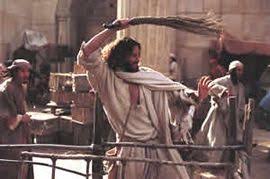
It was during the preparation day leading up to the first Passover of His ministry that Jesus over turned the tables of the money changers and venders of sacrificial animals. Jesus would be crucified on the last preparation day of His ministry. These venders were part of a Temple approved system to make money by providing various convenience services to Jewish worshipers traveling from across the Mediterranean region. For a substantial fee, the priests allowed certain venders to set up booths in the Court of the Gentiles. This was a prime and highly coveted location as it was directly adjacent to the sacrificial alter inside the walls surrounding the Temple’s Holy Place.
The money changers provided the Temple sanctioned task of exchanging foreign currency for a purer silver currency known as the Shekel of Tyre. There were two reasons for this exchange. First, the Temple considered silver as symbolic of blood. The posts that supported the Tabernacle built by Moses had silver footings to separate the Holy Tabernacle structure from touching the ground cursed by God (Genesis 3:17; Exodus 38:25-28). The second and more practical reason for a currency exchange was that the currency of one country could be composed of base metals yet still had value in that country. Therefore, all payments made to the Temple had to be silver Shekels minted in the city of Tyre. In this way, the Temple knew for certain it was receiving a full monetary payment for taxes owed by parishioners and other contributions.
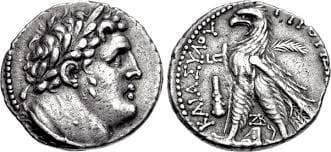
On an interesting note, the city of Tyre was prophesied against by Old Testament prophets to receive God’s Judgement. The city was revered as the birth place of the pagan god Europa from which Europe gets its name. The actual coin has on one side the relief of a pagan god. Still, all this did not seem to bother to the Temple priesthood. The quality of the silver was all that mattered. This is why Judas was paid by the Temple’s Chief Priests a betrayal fee of thirty pieces of silver shekels as it was the only currency they had available to them (Matthew 27:3-5). This was also the only coinage they were allowed to touch due to purity laws.
Jesus overturned the vending tables because He was rightly appalled at not only the absorbent fees being charged by the priesthood to exchange currency and buy animals, but also because it was being conducted in the Court of the Gentiles. There are over one hundred prophecies in the Old Testament concerning the Jews being kind to the Gentiles in an effort to lead them to a belief in the Creator God. The Jews knew it was prophesied that through them, the gentile world would be led to God (Isaiah 56:6-8). But that was at some unknown time in the future. Right now, the Court of the Gentiles was a convenient area in which to conduct a lucrative business. On the other hand, Jesus knew that the Jews had failed miserable at keeping the commandments of God. They had also failed to live up to the reason they were created by God in the first place. They were originally commissioned to be a nation of priests and were supposed to evangelize the gentile world about the Creator God and His love for mankind (Exodus 19:6). They were supposed to emulate God in their lifestyle, personal conduct and adherence to the Mosaic Laws. But the Jewish leaders had once again become spiritually blind and were simply going through the motions of rituals and an adherence to hundreds of customs. Their only focus now was on keeping the Jewish population under their control, turning a profit and keeping Rome happy.
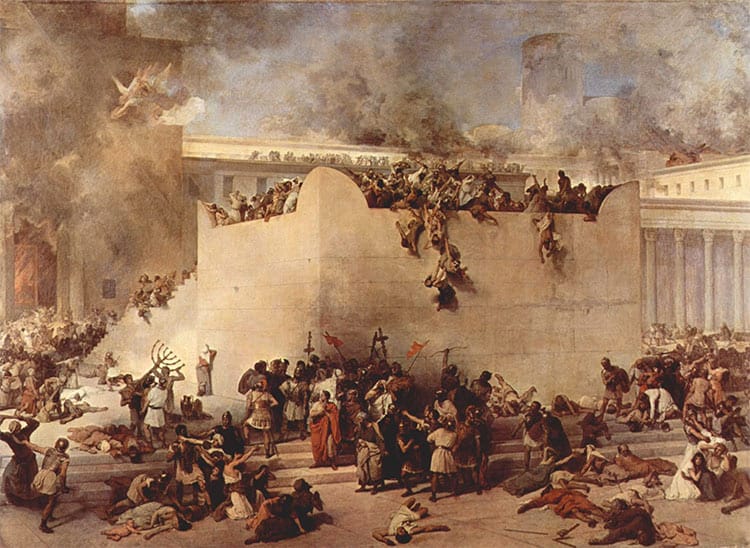
Jesus knew He would be rejected by the Jewish leaders and mainstream Judaism (Matthew 16:21; Matthew 20:17-19; Mark 9:30-32; Luke 9:27). He also knew that the next phase of God‘s ever unfolding plans for mankind included turning His spiritual blessings away from the Jewish race for an allotted amount of time. Instead, He would now charge the gentiles with the task of evangelizing the world with a better more perfect covenant. Jesus was the only Jew who kept the entire law perfectly. He founded a church movement that was initially administered by His Jewish followers. This then was the literal fulfillment of the prophecy that the Jews would lead the gentile world to an understanding of the true nature of the Creator God (Isaiah 49:6). The prophetic fulfillment of this prophecy will occur when 144 thousand Jews are filled with the Holy Spirit and evangelize the world during the time of the Antichrist (Revelation 7: 3-11). Jesus knew that the time of the Jewish Temple system and the nation of Judah were now at an end (Luke 13:33-35; Luke 19:44). He knew that the gentiles would soon rule the entire earth without the assistance of the Jews. This time period would start with the destruction of the Temple in 70A.D. and continue up through the reign of the Antichrist. Therefore, the Court of the Gentiles was now more important to Jesus than the Temple itself. He told Peter, James, John and Andrew that the Temple would soon be destroyed. When He left the Temple that fateful Wednesday afternoon, God had literally left that building never to return (Ezekiel 11:23; Matthew 24:1-2). God would now allow Rome to completely destroy this beautiful yet spiritually empty architectural wonder of the ancient world. Because of the death and resurrection of the Messiah, the Temple had served its original purpose and was now nothing more than a hollow relic. It would be replaced by a virile two thousand year Church Age movement founded on a new more perfect Covenant sealed and ratified with the blood of Christ.
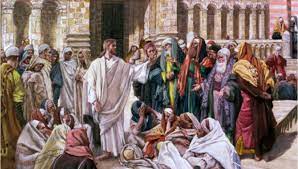
We have now arrived at the first Passover of Jesus’ ministry. From here we need to consider two timeline scenarios each based on Scriptural interpretations. Most people have been taught that Jesus attended three Passovers with each separated by twelve months, thus Jesus’ ministry occurred over a 36-month period. This understanding is derived from the Gospel of John which is the only Gospel to specifically list three Passovers (John 2:12-17, John 6:4, John 11:55).
But a closer look at a reference in the Gospel of Luke indicates there was possibly a fourth Passover. Since we know that Jesus was crucified on April 3rd, 33 A.D., we will look at two scenarios consisting of three and four Passovers working back from His crucifixion date.
SCENARIO ONE: THREE PASSOVERS
In January of 30 A.D. Jesus was 30 years old but will turn 31 on June 17th. We know He attended a wedding in the early spring of 30 A.D. and then quickly went to Jerusalem to attend Passover services in Jerusalem. So we have a three month span of time during which we are told He accomplished four things. First, He left Nazareth to find His blood relative John also known as John the Baptizer. He finds John on the east side of the Jordan River at the exact place where Joshua, His namesake, crossed into the Promised Land to make a military strike on the ancient Canaanite city of Jericho. Locating John probably took approximately one week as it is 100 miles from Nazareth to Bethany beyond the Jordan. Jesus is baptized and receives the full indwelling of the Holy Spirit. God announces from Heaven that Jesus is His beloved Son in whom He is very pleased. John instructs two of his disciples, Peter and his brother Andrew, to follow Jesus. Jesus then went immediately into the wilderness for 40 days to fast, pray and confront Satan who has been waiting thirty years to fully tempt Him. He apparently told His disciples that He would meet back up with them in their home town of Capernaum.
Satan does not know the plans of God in advance. He did not know that Jesus was the Word of God incarnate nor did he know God’s plan for the salvation of mankind. But He became partially aware of Jesus the night a large entourage of angelic host suddenly broke through his kingdom located in the atmosphere of the earth escorting a spirit into a child in Bethlehem (Ephesians 2:2; Luke 2:13-15). And, he was again alarmed to see the Triune Godhead appear on the banks of the Jordan River at Jesus’ baptism. Therefore, Satan was now in the Jordan area and focused on the movements of the man called Jesus. Again, it was probably on the last day of Jesus’ forty day fast when He was at His physical weakest point that Satan tempted Him (Matthew 4:1-11).
We can now account for approximately 7 weeks of Jesus' time since leaving Nazareth. We know that by the time Jesus goes to Cana in early April to attend a wedding, He has appointed Peter, Andrew, Philip, Nathanael and John as His first five disciples. He must have found the most recent three as he traveled and taught in the Galilee area during the month of March. Nathanael is from the village of Cana. After spending a few days in Cana at a wedding, He takes His disciples, His mother and siblings with Him from Cana back to Capernaum. It is a journey of about sixteen miles and they stay there together in Peter's home for a few days (John 2:12). Then, Jesus leaves with His disciples and travels to Jerusalem, a trip of eighty five miles or six days, arriving a few days before Passover. We can now account for approximately fourteen weeks (January-April 15th).
Scripture is clear that His first miracle was in Cana. We know that His ability to heal was a tremendous crowd draw, but there is no mention of Him healing during this time period before turning water into wine. So, we can only surmise that after His wilderness fast of almost six weeks, it took Jesus a month to locate and appoint three more disciples. During this time, He was traveling, preaching in synagogues, and giving inspired sermons throughout the lower Galilee area. At the same time, He was revealing to His Jewish disciples exciting revelations once concealed in the Old Testament (John 18:19-21).
A small note but worthy of mention. Being under the Law, Jesus would not have traveled on Saturday or the Sabbath. Because all ancient calendars consisted of 30 days per month and 12 months to a year, Jesus did not travel 48 days a year or almost five months during His 3-year ministry. This fact combined with the sheer number of towns visited, sermons given and healings leads many scholars to believe that Jesus’ ministry must have been longer that 36 months. Here are the numbers:
TIMELINE ONE
Jesus Baptized January of 30 A.D., appoints first two disciples, spends 40 days in wilderness, moves to city of Capernaum, appoints three more disciples, turns 31 on June 17th 30 A.D.
Jesus attends a wedding in Cana and performs first miracle early April 30 A.D.
Jesus attends first Passover during ministry April 15th. 30 A.D.
January 30 A.D. to Dec 31 A.D. (1st Passover) marks first 12months of ministry
Jesus turns 31 years old
January 31 A.D. to Dec 31 A.D. (2nd Passover) marks second 12 months of ministry
Jesus turns 32 years old
January 32 A.D. to Dec 32 A.D. (3rd Passover) marks third 12 months of ministry
Jesus turns 33 years old
January 33 A.D. to April 3rd, 33 A.D. crucified day before Passover marks 3 months of ministry
Jesus 33 years old but would have turned 34 in June
Jesus is with disciples the months of April - May (40 Days) then ascends= 1 month
Total Length of Ministry is 40 months
SCENARIO TWO: FOUR PASSOVERS
The Gospel of John specifically sites three Passovers during the ministry of Jesus. However, a fourth overlooked Passover appears to be listed in the Gospel of Luke. This Passover would have most probably occurred between the first and second Passovers cited by John. The verse in question states, “Now it happened on the Second Sabbath {Passover} after the First that He {Jesus} went through the grain fields…” (Luke 6:1). The phrase “Second Sabbath after the First” is better translated from the Greek as “on the Second-First Sabbath” or “on the Second Sabbath of the First Order”. A Sabbath of the First Order refers to the 7 annual Sabbaths or Holy Days celebrated with feasts. What Luke is saying is that on the last day of Unleavened Bread or the Second Sabbath of the First Order during the second year of Jesus’ ministry, He was walking through a grain field with His disciples. The second Passover cited by John is found in John 6:1-6 and the third in found in John 12:1-3.
So in this scenario of a fourth Passover, it would have to have been in the early months of 29 A.D. that Jesus is baptized at the age of twenty nine but would turn thirty on June 17th. Therefore, He attends the First Passover of His ministry April 15th of 29 A.D.
TIMELINE TWO
1st Passover of ministry April 29 A.D. to April 30 A.D. = 12 months
2nd Passover of ministry April 30 AD. to April 31 A.D. = 12 months
3rd Passover of ministry April 31 A.D. to April 32 A.D. = 12 months
4th Passover of ministry April 32 A.D. to April 33 A.D. = 12 months
Jesus is with disciples the months of April - May (40 days) then ascends = 1 month
Total Length of Ministry is 49 Months
For Jesus to have attended four Passovers and be crucified in April of 33 A.D., He would have begun His ministry at some time before the April Passover of 29 A.D. when He was twenty nine years old. He would turn thirty two months later on June 17th. This age would still be in line with Luke’s research when he wrote, “… Jesus Himself began His ministry at about thirty years of age…” (Luke 3:23). Then, forty eight months later, He was executed on Friday, April 3rd, 33 A.D. and died just a few hours before Passover began at sundown. This four year timeline combines the three Passovers cited in the Gospel of John (an actual Apostle) with a forth Passover cited in the Gospel of Luke (a devotee & researcher). This timeline also satisfies those scholars that say Jesus could not have accomplished all that is cited in Scripture in only 36 or even 40 months. Especially when you factor in the understanding that He was forbidden by Jewish law to travel on the Sabbath or 48 days a year. This does not mean He could not preach on the Sabbath, just not travel nor perform miracles as that was determined by the pharisees to qualify as work. Jesus ignored this and other false interpretations of the Law. He was allowed to do this and still be considered under the Law because, as the Word of God, He dictated the Law to Moses on Mount Sinai.
Others might say that Jesus would not have been baptized in 29 A.D. because he was only twenty nine years old and Levitical law required Him to be thirty before He would be allowed to preach as a Rabbis or serve as a Temple Priest. But again, Jesus was from the King tribe of Judah and not the Priestly tribe of Levi. Also, King David prophesied an oath given to him by God saying that the Messiah would not be in the order of Levi but instead the Order of Melchizedek a King-Priest (Psalms 110:4; Hebrews 5:5-6). Therefore, Jesus was free to begin His ministry whenever the Holy Spirt moved Him to do so.
The timeline choice is yours to make.
If you enjoy the information provided on this site, please consider making a donation of any amount to help continue its production. Donate Now